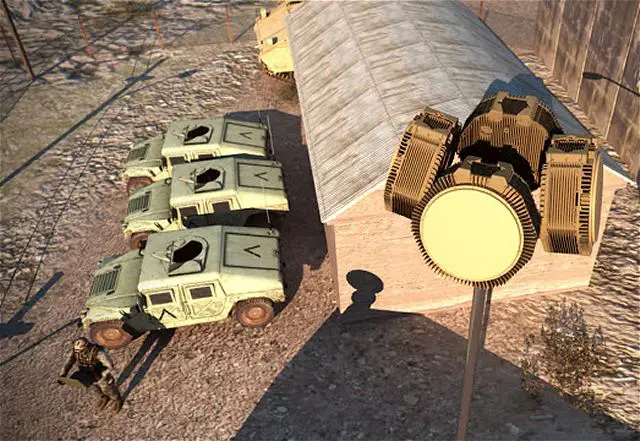| a | |||
Defence & Security News - South Korea |
|||
| Wednesday, April 9, 2014 10:58 AM | |||
| South Korea shows interest to purchase Israeli RPS-42 tactical air surveillance radar. | |||
| South Korea is pushing to buy about 10 low-altitude radars from Israel to better detect small unmanned aerial vehicles (UAVs) and thereby counter threats posed by North Korean drones, military officials said Wednesday. The military has been hastily preparing measures to step up its surveillance capability, in the wake of the discovery of three small UAVs near the tensely guarded border with North Korea in recent weeks. |
|||
| |
|||
 The RPS-42 is a member of RADA's Multi-Mission Hemispheric Radar (MHR) family, enabling advanced protection solutions. |
|||
| The suspected North Korean drones equipped with cameras, which contained photos of Seoul's presidential office and military installations near the border, revealed holes in South Korea's air security. The South currently operates TPS-840K missile control and ground surveillance radars, which are limited in detecting small aircraft such as the suspected North Korean drones that were discovered only after they've fallen on the ground. To fill the holes in air security, the military has hurriedly assigned 200 billion won (US$191 million) to buy 10 low-altitude radars and other surveillance equipment this year to deploy them in major posts and front-line troops, a government official said. "The government decided to transfer some budget from another acquisition program to purchase the low-altitude surveillance radars capable of detecting small UAVs as soon as possible," the official said, asking for anonymity. "The program is aimed at finalizing a contract within this year to be able to deploy them by next year." A team of military and acquisition officials has been dispatched to Israel to visit Rada Electronic Industries, which produces RPS-42 Tactical Air Surveillance Radar System, a potential candidate. The RPS-42 Tactical Air Surveillance Radar System is optimized to detect, classify and track all types of aerial objects at altitudes from 30ft to 30,000ft within a radius of up to 30km. Among these objects are fighters, helicopters, UAVs, transport aircraft, and others. The military is also pushing to supplement its existing surveillance equipment, such as the Thermal Observation Device (TOD) and multipurpose telescopes deployed near the border. A laser weapon system that can effectively destroy an approaching UAV is considered for integration with the low-altitude surveillance radar. Germany's Rheinmetall Defence is a potential provider. A multipurpose anti-air gun, which integrates the 30 mm self-propelled gun K-30 and Chiron anti-air missile, can be placed in major posts to supplement the existing air defense system, which includes Vulcan guns. Local media criticized the military's hastily prepared measures to step up its surveillance capability as they only came after revelations that the drones flew undetected across the border despite the South having known about the North's development of the UAVs as asymmetric weapons. In March 2013, the North's state media unveiled in a military parade its armed UAV, which was touted by leader Kim Jong-un, as well as showing off other drones. |
|||
South Korea shows interest to purchase Israeli RPS-42 tactical air surveillance radar 0904144
- Posted On














